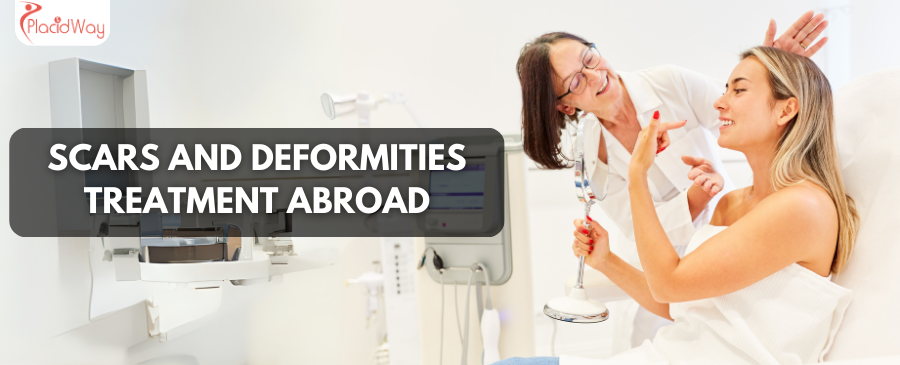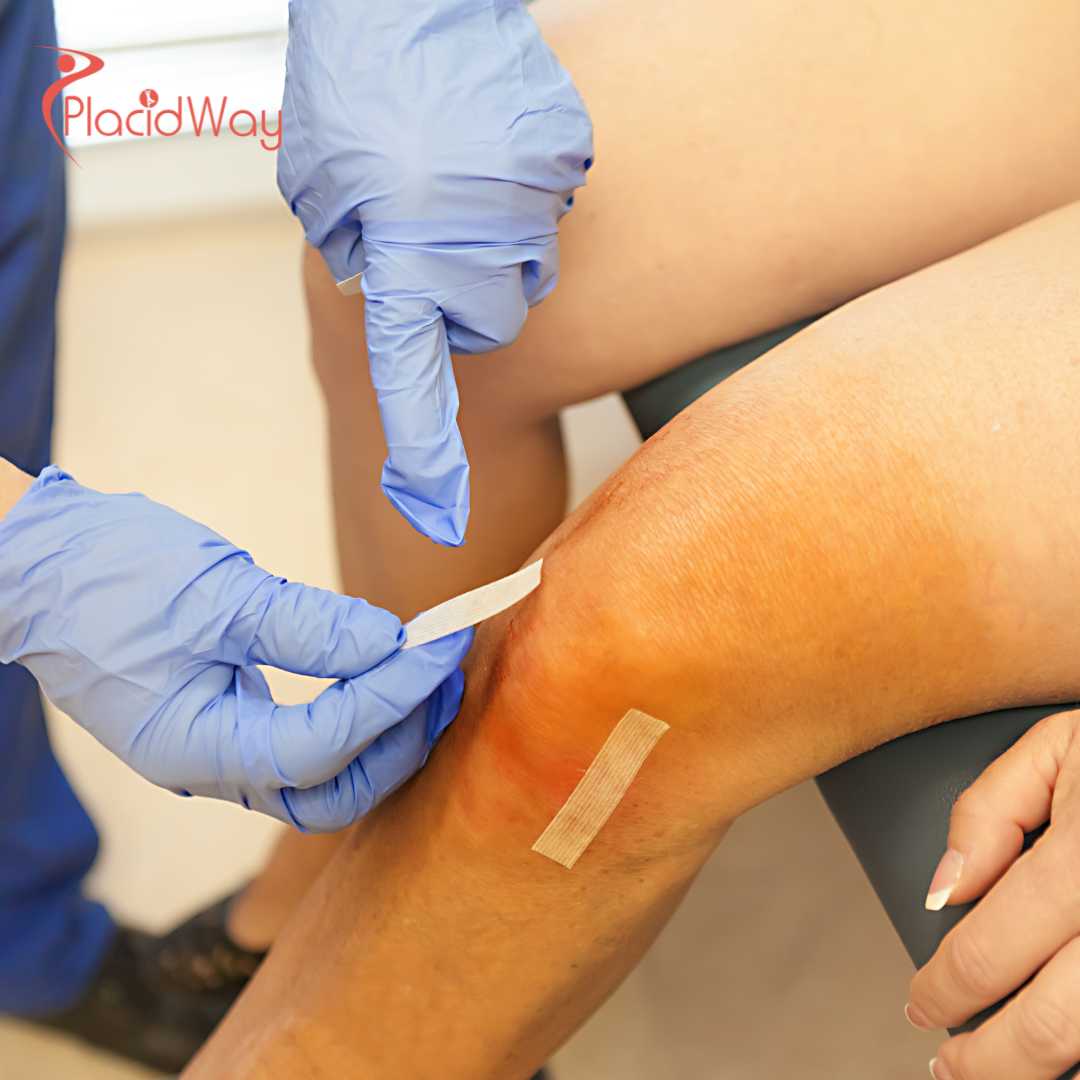
Reclaim Your Confidence: Advanced Scar & Deformity Correction Treatments Worldwide
Living with visible scars or physical deformities can profoundly impact one's self-esteem and quality of life. Whether from an accident, surgery, burn, or a condition present since birth, these marks can be a constant reminder of past trauma or a source of self-consciousness. If you've ever found yourself searching "how to fix a scar," "deformity correction options," or "best treatment for old scars," you're not alone. Many individuals seek solutions to minimize their appearance, improve function, and ultimately, reclaim their confidence.
Fortunately, modern medical advancements offer a wide range of sophisticated treatments for scar and deformity correction. These procedures are designed not just to aesthetic improvement but often to restore normal function and alleviate discomfort. From surgical revisions and laser therapies to advanced reconstructive techniques, the possibilities for significant improvement are greater than ever.
For many, the journey to finding the right treatment leads them beyond their local borders. Medical tourism for scar and deformity correction has become an increasingly popular option, providing access to world-class specialists, state-of-the-art technology, and often more affordable pricing. This comprehensive guide will explore everything you need to know about scar and deformity correction, including the conditions treated, available procedures, recovery, costs, and why considering treatment abroad might be the best decision for you.
What are the common symptoms and impacts of scars and deformities?
Scars are a natural part of the healing process, but their appearance and associated symptoms can vary widely. Deformities, whether congenital or acquired, represent structural abnormalities that can affect form and/or function. Patients often describe their concerns using phrases like "my scar is itchy," "it feels tight," "my old scar looks bad," or "I can't move my joint properly because of this."
- Physical Symptoms:
- Discoloration: Scars can be red, purple, white, or darker than surrounding skin (hyper-pigmented or hypo-pigmented).
- Texture Changes: They might be raised (hypertrophic or keloid scars), depressed (atrophic scars like those from acne or chickenpox), or pitted.
- Pain or Itching: New scars, especially keloids and hypertrophic scars, can be persistently itchy or painful.
- Tightness/Contracture: Scars, particularly those over joints or extensive burns, can restrict movement, causing discomfort and functional impairment.
- Sensitivity: Some scars are hypersensitive to touch, temperature, or pressure.
- Numbness: Nerve damage during injury or surgery can lead to numbness in the scar area.
- Functional Impacts:
- Restricted Movement: Deformities or contracture scars can limit the range of motion in limbs or joints.
- Impaired Sensation: Numbness or altered sensation can affect daily activities.
- Difficulty with Prosthetics/Braces: Irregular skin surfaces can make fitting devices challenging.
- Emotional and Psychological Impacts:
- Self-Consciousness: Visible scars and deformities can lead to embarrassment, anxiety, and avoidance of social situations.
- Low Self-Esteem: Affecting one's body image and overall confidence.
- Depression: Persistent distress over appearance can contribute to mood disorders.
- Social Withdrawal: Fear of judgment or unwanted attention.
Understanding these impacts is the first step toward finding appropriate treatment, which often involves a multidisciplinary approach.
What are the common causes and risk factors for scars and deformities?
Scars are essentially the body's repair mechanism in action. When the skin is injured, collagen is produced to close the wound. The way this collagen is laid down determines the scar's final appearance. Deformities, on the other hand, can have a broader range of origins. Patients often wonder, "Why did my scar heal like this?" or "What caused this birth defect?"
- Causes of Scars:
- Trauma: Cuts, scrapes, lacerations, puncture wounds, animal bites, and impact injuries.
- Surgery: Incisions made during surgical procedures, regardless of how meticulously performed.
- Burns: Heat, chemical, electrical, or radiation burns often result in extensive and challenging scars.
- Acne: Severe acne can lead to various types of atrophic (depressed) scars.
- Infections: Skin infections like cellulitis, chickenpox, or shingles can leave lasting marks.
- Inflammatory Conditions: Diseases like lupus or scleroderma can cause skin changes and scarring.
- Causes of Deformities:
- Congenital (Birth Defects): Present from birth, often due to genetic factors, environmental influences during pregnancy (e.g., cleft lip/palate, clubfoot, syndactyly).
- Trauma: Severe injuries, especially to bones or joints, can lead to permanent structural changes if not properly treated.
- Burns: Severe burns can cause contractures that pull skin and underlying tissues, leading to significant deformities.
- Disease: Conditions like arthritis, tumors, or neurological disorders can cause progressive deformities over time.
- Surgical Complications: While rare, poorly performed surgeries or complications can sometimes result in new deformities.
- Risk Factors for Poor Scar Healing:
- Genetics: Family history of keloids or hypertrophic scars increases individual risk. People with darker skin tones are generally more prone to keloid formation.
- Location: Scars over joints, areas of high tension (e.g., chest, shoulders), or frequently moving parts tend to heal less favorably.
- Wound Type: Deep, irregular, infected, or poorly closed wounds are more likely to result in prominent scars.
- Age: Younger individuals tend to have more robust collagen production, which can sometimes lead to more prominent scarring.
- Skin Type: Individuals with darker skin tones are genetically predisposed to keloid and hypertrophic scarring.
- Hormones: Hormonal changes during puberty or pregnancy can influence scar development.
What types of procedures and treatments are available for scar and deformity correction?
The field of scar and deformity correction is highly specialized, offering a spectrum of treatments. "What is the best treatment for my scar?" or "Can my old scar really be removed?" are common questions. The answer depends heavily on the scar's type, size, location, and the patient's individual goals.
- Non-Surgical Treatments:
- Topical Treatments: Silicone sheets/gels, corticosteroid creams, vitamin E (limited evidence), and newer growth factor serums. Best for preventing or treating early scars.
- Injectables:
- Corticosteroid Injections: Directly injected into raised scars (keloids, hypertrophic) to reduce inflammation and flatten them.
- Dermal Fillers: Used for depressed (atrophic) scars to raise them to the level of surrounding skin.
- Fat Grafting: Transferring fat from one part of the body to another to fill depressions, improve skin quality, and promote healing.
- Laser Therapy:
- Fractional Lasers (e.g., Fraxel): Improve texture, color, and depth of various scars (acne, surgical, burn).
- Pulsed Dye Lasers (PDL): Target blood vessels to reduce redness in new scars and flatten raised ones.
- Ablative Lasers (e.g., CO2, Erbium): Remove outer layers of skin for severe scars, promoting new, smoother skin growth.
- Dermabrasion/Microdermabrasion: Mechanical exfoliation to smooth the skin surface, effective for shallow scars.
- Chemical Peels: Use acids to remove damaged outer skin layers, stimulating regeneration for superficial scars.
- Cryotherapy: Freezing the scar tissue to reduce its size and soften it, particularly for keloids.
- Radiation Therapy: Sometimes used in conjunction with surgery for aggressive keloids to prevent recurrence.
- Surgical Treatments (Scar Revision & Deformity Correction):
- Scar Excision: Surgical removal of the entire scar, followed by careful closure to create a thinner, less noticeable scar. Often involves specialized techniques like W-plasty or Z-plasty to reorient the scar along natural skin lines.
- Skin Grafts: Healthy skin is taken from one area (donor site) and transplanted to cover a wound or a large, excised scar.
- Tissue Expansion: A balloon-like expander is placed under healthy skin near the scar/deformity and gradually filled with saline over weeks/months to stretch the skin. This expanded skin is then used to replace scarred or deficient tissue.
- Flap Surgery: Involves transferring skin, fat, and sometimes muscle from an adjacent or distant part of the body, along with its blood supply, to reconstruct a more complex defect.
- Dermato-fasciotomy/Subcision: Releasing fibrous bands beneath depressed scars (especially acne scars) to allow the skin to rise.
- Reconstructive Surgery for Deformities: Complex procedures to correct congenital defects (e.g., cleft lip/palate repair, hand deformities), or acquired deformities from trauma (e.g., bone realignment, soft tissue reconstruction).
A consultation with an experienced plastic or reconstructive surgeon is crucial to determine the most suitable treatment plan.
Am I eligible for scar or deformity correction, and who is it for?
Scar and deformity correction is not a "one size fits all" solution. Patients often ask, "Can my scar be fixed?" or "Is this deformity too severe to treat?" The best candidates are individuals who:
- Are in Good General Health: Free from medical conditions that could impair healing or increase surgical risks.
- Are Non-Smokers: Smoking significantly compromises circulation and healing, increasing complications.
- Have Realistic Expectations: Understand that while significant improvement is possible, complete scar erasure or perfect symmetry is rarely achievable. The goal is improvement, not perfection.
- Have Stable Scars: For scars, it's generally recommended to wait at least 6-12 months after the initial injury or surgery for the scar to mature. Early intervention might be considered for functional issues or very aggressive scars.
- Are Bothered by the Scar/Deformity: Whether for aesthetic reasons, discomfort, or functional impairment.
- Are Emotionally Stable: Can cope with the recovery process and understand the gradual nature of results.
- Have Specific Types of Scars:
- Hypertrophic Scars: Raised, red scars confined to the original wound boundary.
- Keloid Scars: Raised, red scars that grow beyond the original wound boundary.
- Atrophic Scars: Depressed, sunken scars (e.g., acne scars).
- Contracture Scars: Scars that restrict movement due to tightening of skin and underlying tissue.
- Wide or Stretched Scars: Scars that have spread over time.
- Discolored Scars: Hyper-pigmented or hypo-pigmented scars.
- Are Candidates for Deformity Correction: Individuals with congenital conditions, post-traumatic deformities, or those resulting from disease where surgical or non-surgical intervention can improve form and/or function.
A thorough consultation will assess your specific situation and determine the most appropriate treatment plan.
What is the typical recovery time and what can I expect?
The phrase "how long does scar revision take to heal?" is frequently searched, and the answer isn't simple. Recovery largely depends on the invasiveness of the procedure. Analogously, a small cut heals faster than a major surgery. Patience is key, as scar maturation can take 12-18 months.
- Non-Surgical Treatments (e.g., Laser, Injections, Peels):
- Downtime: Often minimal, ranging from a few hours of redness to 1-2 weeks of peeling/crusting for more aggressive lasers or peels.
- Discomfort: Mild, managed with over-the-counter pain relievers.
- Results: Gradual improvement over several weeks to months, often requiring multiple sessions.
- Surgical Scar Revision:
- Immediate Post-Op: Swelling, bruising, and mild discomfort are common. Dressings will be applied.
- First Few Weeks: Stitches are typically removed within 5-10 days. Activity restrictions are usually in place (avoid heavy lifting, strenuous exercise). The scar will initially appear red and raised.
- First Few Months: The scar will gradually flatten and fade. It's crucial to protect it from the sun and follow all post-operative care instructions (e.g., silicone gel application, massage).
- Full Maturation: The final appearance of the scar may not be evident for 12-18 months.
- Complex Deformity Correction (e.g., Tissue Expansion, Flap Surgery):
- Hospital Stay: May require an overnight stay or longer, depending on the complexity.
- Downtime: Several weeks of significant activity restriction. Recovery can be more extensive due to the nature of tissue manipulation.
- Pain Management: Prescribed pain medication for the initial phase.
- Physical Therapy: Often essential for restoring function and mobility, especially for joint-related deformities.
- Multiple Stages: Some complex corrections may require several surgical stages over months.
Throughout recovery, it's vital to follow your surgeon's specific instructions for wound care, medication, and activity restrictions to ensure optimal healing and results.
What are the potential risks and side effects of scar and deformity correction?
While generally safe when performed by experienced professionals, it's important to be aware of the potential risks, just as you would with any medical intervention. Patients often search for "scar revision gone wrong" or "side effects of laser scar removal."
- General Surgical Risks (for invasive procedures):
- Infection: Though rare, it's a possibility with any incision.
- Bleeding: Hematoma formation (blood collection under the skin).
- Adverse Reaction to Anesthesia: Varies depending on the type of anesthesia used.
- Poor Wound Healing: Especially in smokers or those with underlying health conditions.
- Numbness or Altered Sensation: Due to nerve irritation or damage.
- Pain: Persistent discomfort.
- Specific Risks for Scar Correction:
- Unsightly Scarring: Despite revision, the new scar may still be noticeable, or in rare cases, worse than the original (e.g., new keloid formation).
- Scar Widening: The revised scar may stretch or widen over time.
- Discoloration: Persistent redness, hyper-pigmentation, or hypo-pigmentation.
- Asymmetry: If the scar correction involves a symmetrical area of the body.
- Recurrence: Especially for keloids, despite treatment.
- Skin Necrosis: Tissue death, rare but possible with complex flap surgeries.
- Specific Risks for Deformity Correction:
- Incomplete Correction: The deformity may not be fully resolved.
- Functional Impairment: In rare cases, function might not improve or could be inadvertently worsened.
- Nerve Damage: Resulting in weakness or paralysis.
- Bone Healing Problems: If bone reshaping is involved.
Your surgeon will discuss all potential risks during your consultation and take measures to minimize them. Following pre- and post-operative instructions diligently is crucial for reducing complications.
Worldwide Cost Comparison for Scar and Deformity Correction (Estimated)
The cost of scar and deformity correction can be a significant barrier for many. Searching "cost of scar removal surgery," "affordable deformity treatment," or "how much does laser scar removal cost?" often reveals a wide range. Factors influencing cost include the type of procedure, its complexity, the extent of the area treated, the surgeon's fees, anesthesia fees, facility fees, and pre/post-operative care.
Here's an estimated cost comparison for common procedures (figures are approximate and can vary widely):
| Procedure Type | USA/Canada (Est.) | UK/Western Europe (Est.) | Turkey/Mexico/Thailand (Est.) |
|---|---|---|---|
| Small Scar Excision (simple) | $1,500 - $4,000 | £1,000 - £3,000 (€1,200 - €3,500) | $500 - $1,500 |
| Complex Scar Revision (e.g., Z-plasty) | $3,000 - $8,000+ | £2,500 - £6,000+ (€3,000 - €7,000+) | $1,000 - $3,500 |
| Laser Scar Treatment (per session) | $300 - $800 | £200 - £600 (€250 - €700) | $100 - $400 |
| Keloid/Hypertrophic Scar Injections (per session) | $100 - $400 | £80 - £300 (€100 - €350) | $50 - $200 |
| Tissue Expansion (multi-stage) | $8,000 - $20,000+ | £7,000 - £15,000+ (€8,000 - €17,000+) | $3,000 - $8,000 |
| Moderate Reconstructive Deformity Surgery | $10,000 - $30,000+ | £8,000 - £25,000+ (€9,000 - €28,000+) | $4,000 - $12,000 |
These figures often represent package deals abroad, which may include consultation, surgery, anesthesia, hospital stay, and initial follow-up, offering substantial savings compared to itemized billing in Western countries.
Why should I consider having scar and deformity correction abroad?
Many patients are searching "medical tourism for scars" or "travel for deformity treatment" because they recognize the distinct advantages:
- Significant Cost Savings: As seen in the table above, the cost of procedures in popular medical tourism destinations can be 50-70% less than in the USA, Canada, or Western Europe, without compromising quality. This makes life-changing treatments affordable.
- Access to Specialized Expertise: Many countries have centers of excellence with surgeons who specialize specifically in complex scar revision or intricate reconstructive procedures for rare deformities. They often have extensive experience with diverse patient cases.
- Shorter Waiting Times: In many public healthcare systems, elective procedures like scar revision can involve long waiting lists. Traveling abroad allows for quicker scheduling and faster access to treatment.
- Advanced Technology and Techniques: Leading medical tourism hospitals are often equipped with the latest laser technologies, surgical instruments, and imaging systems, enabling precise and effective treatments.
- Privacy and Anonymity: For individuals who prefer discretion, traveling for treatment offers a degree of privacy, allowing them to recover away from their familiar social circle.
- Comprehensive Treatment Packages: Many clinics offer all-inclusive packages covering surgery, hospital stay, medications, airport transfers, and sometimes even accommodation, simplifying the patient journey.
It's about finding the perfect balance between high-quality care, specialized expertise, and affordability.
Which countries offer the best value for scar and deformity treatment?
When searching for "best country for scar treatment" or "affordable deformity surgery overseas," several destinations consistently emerge due to their blend of quality, experience, and cost-effectiveness:
- Turkey: Particularly Istanbul and Antalya, have become global hubs for cosmetic and reconstructive surgery. They offer state-of-the-art facilities, internationally trained surgeons, and highly competitive prices, especially for scar revision, burn scar treatment, and aesthetic deformity corrections.
- Mexico: Border cities and popular destinations like Cancun or Guadalajara are favored by North American patients. Mexico provides excellent, accessible care often with shorter travel times and significant cost savings for various scar and deformity treatments.
- Thailand: Known for its exceptional hospitality and advanced medical infrastructure, cities like Bangkok offer world-class plastic and reconstructive surgeons specializing in complex cases, including burn scars and congenital deformities, at a fraction of Western costs.
- South Korea: A leader in cosmetic and reconstructive surgery innovation, particularly for intricate procedures and advanced laser therapies for scars. While potentially slightly higher in cost than Turkey or Mexico, it offers cutting-edge techniques and highly skilled surgeons, particularly for Asian skin types.
- India: Offers a vast network of accredited hospitals and highly qualified surgeons at very affordable prices, making it a strong contender for various medical treatments, including reconstructive surgery.
When selecting a country, consider not just the cost but also the surgeon's specialization, clinic accreditation, and patient reviews.
What should I expect when traveling for scar and deformity correction abroad?
Traveling for medical treatment requires planning. When searching "what to expect for medical travel for scars," patients are looking for a clear roadmap:
- Initial Consultation & Planning:
- Remote Consultation: Share medical history, photos of the scar/deformity, and your goals with potential clinics via email or video call.
- Treatment Plan & Quote: Receive a personalized treatment plan, including recommended procedures, estimated cost, and duration of stay.
- Logistics Assistance: Many medical tourism facilitators or clinics assist with flights, accommodation, and airport transfers.
- Travel & Arrival:
- Arrive at your destination a few days before your scheduled procedure for pre-operative assessments and to settle in.
- In-Person Consultation & Pre-Op:
- Meet your surgeon in person, discuss the plan in detail, ask any remaining questions, and undergo necessary medical tests.
- Procedure Day:
- The procedure will be performed at an accredited hospital or clinic.
- Recovery Period:
- Spend the initial recovery period in a hospital or recovery house, then typically in a hotel or rented apartment.
- Attend follow-up appointments with your surgeon.
- Adhere strictly to post-operative instructions.
- Return Home:
- Once cleared by your surgeon, you can travel back, usually with instructions for ongoing care.
Language barriers are often mitigated by translator services provided by the clinics. Focus on communication and clear understanding at every step.
How can I ensure safety and quality when seeking treatment abroad?
The primary concern for any patient traveling for medical care is safety and quality. When searching "safe scar treatment abroad" or "reputable deformity correction clinics overseas," diligence is key:
- Verify Clinic Accreditation: Look for international accreditations such as Joint Commission International (JCI), which signifies adherence to rigorous international standards for patient safety and quality of care.
- Research Surgeon Credentials: Ensure your surgeon is board-certified, has extensive experience in scar and deformity correction, and is a member of relevant international professional organizations (e.g., ISAPS - International Society of Aesthetic Plastic Surgery). Review their portfolio of before-and-after photos.
- Read Patient Reviews and Testimonials: Look for independent reviews on platforms like Google, Trustpilot, or dedicated medical tourism sites. Pay attention to both positive and negative feedback regarding communication, surgical outcomes, and post-operative care.
- Maintain Clear Communication: Ensure you have direct, transparent communication with the clinic and surgeon. Ask all your questions, and ensure you understand the treatment plan, risks, and recovery process.
- Check for Comprehensive Packages: Reputable clinics will offer clear, all-inclusive pricing without hidden fees and will outline what is covered (e.g., pre-op tests, anesthesia, hospital stay, initial follow-ups).
- Consider Medical Tourism Facilitators: Companies like PlacidWay specialize in vetting clinics and surgeons, arranging logistics, and providing support throughout your journey, adding an extra layer of security.
- Post-Operative Care Plan: Ensure there's a clear plan for your post-operative care, both while you are abroad and once you return home.
Your health and safety are paramount; never compromise on thorough research and due diligence.
What are some patient success stories from abroad for scar and deformity correction?
While specific patient names and details cannot be shared for privacy reasons, the medical tourism landscape is filled with inspiring narratives of individuals who have successfully undergone scar and deformity correction abroad. These "before and after scar removal" transformations are often profound:
- Restored Confidence After Burn Scars: A young professional who suffered extensive burn scars from an accident found specialized laser and surgical revision treatment in Turkey. After multiple sessions, the redness subsided, the contractures softened, and she regained significant mobility and self-esteem, allowing her to pursue her career and social life with renewed vigor.
- Minimizing Post-Surgical Scars: A patient from Canada, dissatisfied with a prominent abdominal surgical scar, opted for advanced scar revision in Mexico. The skilled plastic surgeon employed Z-plasty techniques and follow-up laser treatments, significantly blending the scar into the natural skin folds, leading to a much smoother and less noticeable result.
- Correcting Childhood Deformities: A family traveled to Thailand for their child's complex hand deformity correction. The highly specialized pediatric reconstructive team performed a series of intricate surgeries, improving the child's hand function dramatically and setting them up for a more independent future, a procedure that was either unavailable or prohibitively expensive in their home country.
- Addressing Keloid Recurrence: An individual with a history of recurrent keloids after previous treatments found a clinic in South Korea that offered a combination of excision, radiation therapy, and post-operative steroid injections. This multi-pronged approach finally brought the keloids under control, providing lasting relief and cosmetic improvement.
These stories underscore the potential for transformative results when combining advanced medical expertise with the advantages of medical tourism. Patients not only achieve physical improvements but also often experience a profound boost in their overall quality of life.
Take the Next Step with PlacidWay
Ready to explore treatment options abroad? Discover top clinics, compare prices, and get a free quote tailored to your needs with PlacidWay.
Cosmetic Surgery Abroad, Plastic Surgery Abroad










Share this listing